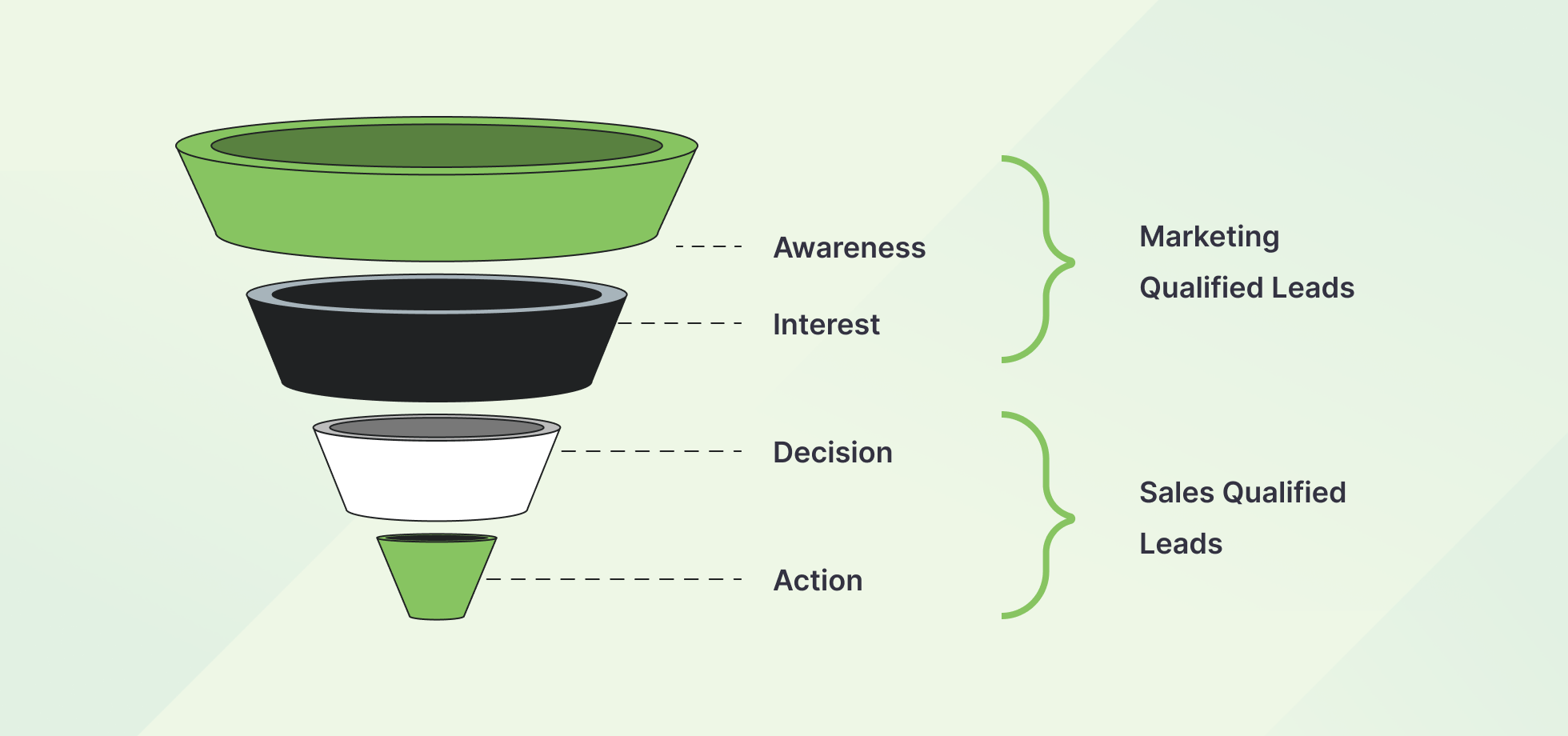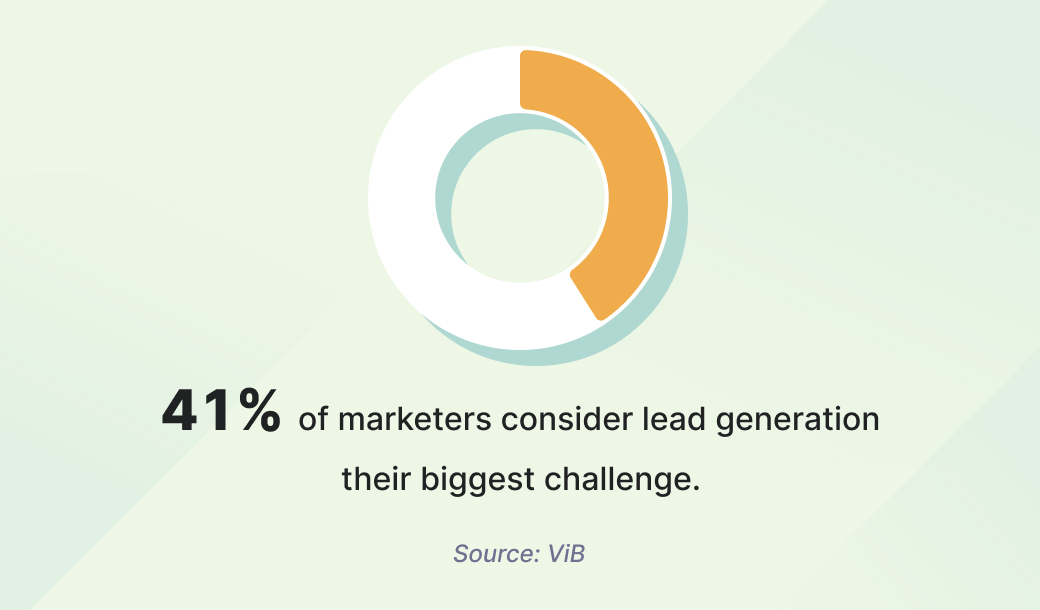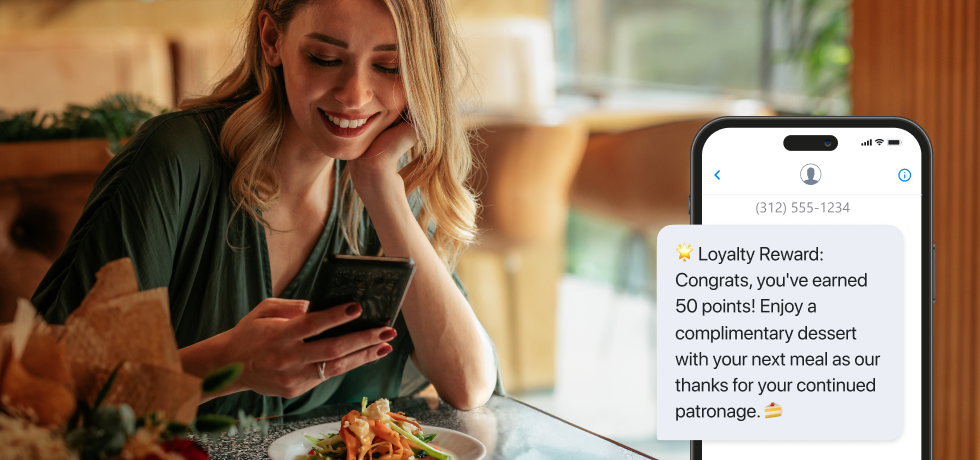
Business success varies from company to company and depends on various factors—size, goals, industry, and so on. Nevertheless, one approach is essential for ongoing growth: B2B lead generation.
If you’ve ever seen a company share a blog article across their socials or have received a cold call from a promoter, then you’ve already come into contact with it. But what is B2B lead generation, and how can you use it to grow your business?
In this article, we go over several B2B lead generation strategies to help you find the right fit. So, keep reading to find out everything you need to know.
What is B2B lead generation?
B2B lead generation is the practice of identifying and attracting potential customers by marketing a company’s products or services to other businesses. It differs from B2C lead generation, which primarily targets individual consumers. Incorporating B2B inbound marketing strategies can enhance the effectiveness of this process.
The B2B lead generation process involves various strategies and tactics to capture the interest of decision-makers in other businesses and guide them through the sales funnel. Common examples include:
- Content marketing
- Social media outreach
- Email campaigns
- Event marketing
- Paid ad campaigns
- SMS campaigns
Types of B2B leads
B2B leads are primarily categorized into two main types: marketing qualified leads (MQLs) and sales qualified leads (SQLs). Each corresponds to different stages in the sales funnel and needs to be approached differently.
MQLs are leads that have shown interest in a company’s products or services but aren’t ready to be contacted by sales yet in a sales-led company. This means that they’ve probably engaged with your content (i.e. downloading whitepapers or attending webinars) and require a bit more nurturing to become sales-ready.
SQLs are leads that have been vetted by the marketing team and deemed ready for direct sales contact. This is because they’ve demonstrated a clear interest in purchasing from your business and meet specific criteria set by the sales team (i.e. budget, need, authority to make decisions).

In a product-led growth (PLG) company, conversion happens through a combination of automated and self-service methods, relying on digital marketing for the entire process. This type of business only has MQLs in the pipeline, as there is no sales team to chase the lead.
One example is that of Textmagic. According to Marketing Director, Ioana Sima:
“At Textmagic, we prioritize identifying and nurturing MQLs by tracking metrics such as content engagement, website activity, and email interactions. We use these data points to score and prioritize leads. Since we don’t have a sales team, we focus on retargeting MQLs with tailored marketing campaigns, ensuring they receive relevant information and offers to increase their likelihood of conversion.”
Objectives of B2B lead generation
The primary objective of B2B lead generation is to boost sales and drive revenue growth. Businesses can convert prospects into paying customers by identifying and attracting high-quality opportunities. This is achieved by identifying the right audience, understanding their needs, and providing solutions that align with their business goals.
In addition to this, B2B lead generation helps you build a pipeline of potential clients. This mitigates the risk of revenue fluctuations by ensuring that there are always prospects available for the sales team to convert.
B2B SaaS lead generation also aims to enhance brand awareness and visibility, establishing your company as a trusted and recognized name in your specific industry. This is achieved by leveraging various marketing channels, such as content marketing, social media, and events, to reach potential clients and foster a sense of authority in your niche.
Benefits of B2B lead generation
B2B lead generation comes with many benefits that drive business growth and enhance the overall effectiveness of your marketing strategy. Here are the key ones:
- Increased sales: Generates a steady stream of qualified leads that can be nurtured and converted into paying customers, significantly boosting revenue.
- Improved brand awareness: Enhances the company’s visibility and reputation in the market, making it more recognizable and trusted by potential clients.
- Better audience targeting: Enables precise targeting of potential clients, increasing the efficiency and effectiveness of marketing campaigns.
- Enhanced customer relationships: Builds stronger connections with prospects through personalized engagement and ongoing communication.
- Pipeline building: Ensures a continuous flow of potential clients at various stages of the buying process, supporting long-term business growth and stability.
- Cost efficiency: Optimizes marketing spend by focusing resources on high-potential leads, reducing wastage, and increasing return on investment.
- Actionable insights: Provides valuable data and analytics to refine marketing and sales strategies, improving overall decision-making processes.
- Competitive advantage: Positions the company ahead of competitors by effectively capturing market interest and demonstrating industry leadership.
In a nutshell, B2B lead generation is a powerful tool for success. It helps brands improve marketing outcomes and maintain a competitive edge in their industry. It serves as the foundation of an effective business strategy.
How to generate B2B leads
Generating B2B leads requires a strategic approach tailored to your business goals and target audience. To get started, we recommend following the steps below.
Step 1: Define your ideal customer
Begin by creating a detailed buyer persona that outlines the characteristics of your ideal customer, including industry, company size, job roles, and pain points. Understanding your target audience helps tailor your marketing efforts and ensures you attract high-quality leads.
Step 2: Select the right strategy
Choose the lead generation strategies that best align with your business objectives and target audience. Combining multiple approaches often yields the best results, as it maximizes your reach and engagement across various channels.
Step 3: Qualify and prospect leads
Qualifying and prospecting the leads you generate is essential to the success of your sales team, as it helps prioritize your efforts on those most likely to convert. Use criteria such as budget, authority, need, and timeline (BANT) to assess their potential.
Best lead generation strategies in 2024
When a business purchases a product or service from another business, the decision isn’t usually taken by one person only. In fact:

These people are ranked at various levels throughout the company, from executives to employees and everything in between. The finance department might even get involved depending on the investment value.
So, how do you appeal to all these different buyer personas? Consider the strategies below to find what works best for you.
Inbound marketing
Inbound marketing focuses on attracting customers through valuable content and experiences tailored to their needs and interests. This strategy usually involves:
- Creating engaging content (blog articles, eBooks, whitepapers, etc.)
- Optimizing your content for search engines (SEO)
- Using search engine marketing (SEM) to increase visibility
- Leveraging social media platforms to distribute the content
When to use it: To build long-term relationships and attract leads through valuable content, particularly when your goal is to establish authority and trust in your industry among executives, managers, and team leaders who are researching solutions.
Our Marketing Director, Ioana Sima, adds:
“As a product-led company, we find that inbound marketing is an effective way to help customers discover our solutions. We focus on content creation and SEO, targeting long-tail, transactional and informational keywords, and user pain points. This approach allows potential customers to find us at every stage of their journey. Additionally, we use social media platforms and email campaigns to distribute our content and reach a wider audience.”
Outbound marketing
Outbound marketing involves actively reaching out to potential clients through direct means of communication to promote your product or service. This approach involves:
- Cold-emailing potential leads to introduce your offering
- Cold-calling potential clients directly via phone
- Sending physical promotional materials (i.e. brochures or catalogs)
When to use it: When you need to generate immediate responses and directly target potential clients, especially if you have a specific list of prospects to contact (decision-makers like executives and managers in specific companies or industries).
According to Dragos Raducanu, our Affiliate & partnerships manager:
“Outbound marketing is crucial for B2B lead generation. This is because it enables businesses to proactively engage potential clients through personalized outreach, capturing the attention of key decision-makers and driving high-quality leads essential for growth.”
Networking and events
Networking means building relationships and generating leads through personal interactions in professional settings, especially at industry events. This means:
- Attending or hosting conferences to connect with prospects
- Participating in trade shows to showcase your products or services
- Hosting or joining online events to share expertise or give demos
When to use it: To create personal connections and generate high-quality leads, particularly when you aim to establish credibility and build strong professional relationships with executives, managers, and industry leaders.
Partnerships and referrals
Partnerships and referrals leverage existing relationships and networks to generate new business opportunities. This strategy usually involves:
- Building strategic partnerships with other businesses
- Encouraging referrals from satisfied customers
- Putting a rewards program in place to motivate and retain customers
When to use it: To expand your reach and acquire high-quality leads through trusted recommendations, targeting executives, managers, and other key decision-makers who trust peer recommendations.
In the words of our Affiliate Manager & Outreach Specialist, Dragoș Răducanu:
“Partnerships and referrals are a key component of an effective B2B lead generation strategy. Partnerships expand market reach and foster innovation, while referrals build trust and credibility.”
Omnichannel communication
Omnichannel communication involves engaging potential clients through multiple interconnected channels, providing a seamless and consistent experience. It’s achieved by:
- Sending targeted email campaigns to nurture leads
- Interacting with prospects on various social media platforms
- Directly reaching out to leads through phone calls
- Offering live chat support on your website
- Sending promotional or informative text messages
When to use it: To provide a cohesive and integrated experience for potential clients, especially when targeting a diverse audience that includes executives, managers, team leaders, and regular employees.
Display marketing
Display marketing consists of using visual advertisements to attract potential clients across various engagement platforms. Leveraging it involves:
- Placing visually appealing banners on websites to capture attention
- Creating engaging video content to promote your products or services
- Targeting users who visited your website with relevant ads
- Integrating ads seamlessly into content on social media
When to use it: To enhance brand visibility and attract potential leads, particularly when you aim to reach a broad audience that includes managers and employees who frequently browse online content and social media.
LinkedIn marketing
LinkedIn marketing leverages the professional networking platform to connect with potential clients and generate leads through:
- Running targeted ad campaigns to reach specific segments
- Posting relevant articles, updates, and insights
- Participating in or creating LinkedIn groups to foster connections
- Sending personalized messages directly to potential leads
When to use it: To target professionals and decision-makers such as executives, managers, and industry leaders, particularly when your goal is to establish thought leadership and build strong professional relationships within specific industries.
Successful B2B lead generation case studies
Are you still wondering how to generate leads in B2B sales successfully and reach your targets effortlessly? You’re not alone. In fact:

The case studies below highlight two efficient B2B lead generation strategies. You can learn from them before devising your own approach.
Rakuten
Japanese tech conglomerate Rakuten wanted to attract US-based small businesses to its e-commerce platform of the same name. To accomplish this, the company enlisted a third-party marketing agency to help develop a multi-step B2B lead generation strategy, which started with creating engaging content.
The content, which included eBooks and checklists, was tailored to specific industries like fashion, beauty, and electronics. The strategy also involved video ads for awareness, lead magnets for engagement, and retargeting strategies to nurture prospects through the sales funnel.
After just 3 months of campaigns, Rakuten managed to get:
- 57 qualified B2B leads
- 7.45% conversion rate
- 19 sales meetings
The success of this initiative led to a renewed contract between Rakuten and the agency, which led to continued B2B lead generation in a complex international market.
Cornerstone OnDemand
Leading HR management SaaS company Cornerstone OnDemand enlisted a marketing partner to help execute a multi-channel strategy that boosted lead generation and brand awareness. The campaigns spanned platforms like LinkedIn, Google, Demandbase, and Drift, targeting HR professionals within SMBs.
The campaign began with a thorough audit of Cornerstone’s digital marketing channels, after which engaging content such as webinars, podcasts, and e-books tailored to the HR sector was created. Utilizing advanced tools for conversion rate optimization, the team enhanced lead flow and reduced friction for sign-ups and interactions.
Over a 10-month period, Cornerstone OnDemand garnered:
- 2,837 B2B MQLs
- 189 closed-won deals
- 274% ROI overall
The success of the initial 3-month engagement led to an extended partnership, highlighting the effectiveness of the marketing strategy in achieving Cornerstone’s goals.
Conclusion
Conducting B2B lead generation efforts might sound challenging, but it’s an approach worth pursuing if you want to achieve healthy and sustainable business growth. Many companies have mastered lead gen techniques and made them their own, and you can do the same.
By familiarizing yourself with the various B2B lead generation strategies, you can find the perfect match for your company. And after you put it into action, opportunities will start flowing in no time—and in the long run, too.
Frequently Asked Questions (FAQs)
B2C campaigns usually run on platforms like Facebook or Instagram.
B2B campaigns focus on LinkedIn, niche communities, email or SMS outreach, webinars, and specialized events to connect with business decision-makers.
The lead scoring model in B2B is a framework used to assign numerical values to potential clients based on their behavior, demographics, and level of engagement.
The best platform for B2B lead generation depends on the strategy you’re using and the audience you’re targeting.
LinkedIn Sales Navigator connects you directly with decision-makers through detailed targeting and customized outreach. HubSpot is a reliable platform for managing leads across email, CRM, and automation, especially for companies using inbound strategies.
Textmagic empowers you to reach B2B prospects instantly through personalized SMS campaigns, making it ideal for follow-ups, appointment reminders, and nurturing cold leads into conversions.
A B2B lead generation strategy often blends content-driven inbound efforts, LinkedIn outreach, and account-based targeting.
Publishing resources like blog posts, case studies, or whitepapers draw in relevant leads through organic search. After capturing initial interest, LinkedIn campaigns can target key roles with sponsored content or lead forms that deliver specific value.
Related articles
What is value-based selling and how it outperforms traditional sales strategies?
Traditional selling feels like a one-way street, whe...
How to use an employee text messaging system for internal staff communication
As traditional companies gradually get replaced by b...
Maximizing SMS marketing impact with Unified Communications as a Service (UCaaS)
SMS messaging has long been a top marketing strategy...
SMS marketing for restaurants: Key benefits & best practices
SMS marketing, particularly vital in the time-sensit...
4 Nutshell CRM integrations with Textmagic & Zapier
Discover 4 powerful Textmagic and Nutshell CRM integ...




